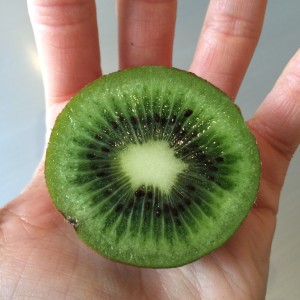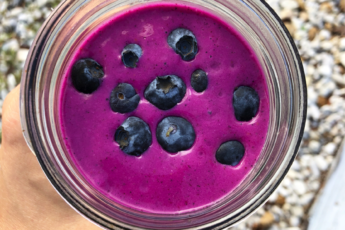KALE
Until the end of the Middle Ages, kale was one of the most common green vegetables in Europe. The kale craze lives on today so it is widely available in supermarkets, but make sure you go organic: according to the Environmental Working Group, kale is on the Dirty Dozen list (foods where pesticide residues are found even when washed and, in some cases, peeled). You can eat kale raw in smoothies, massage it with oil in salads, lightly steamed, and as kale chips!
GREENS POWDER
Powdered green nutrition! Greens powders are powerhouse blends that are cold-dried (to protect the heat-sensitive nutrients and phytonutrients), ground into powder and mixed together to create a superfood that’s alive, raw and bio-available, maintaining the delicate balance of essential oils, enzymes, vitamins, and minerals. We love Ormus Supergreens from Sunwarrior, and spirulina. The Ormus blend includes potent nutrition from alfalfa, barley, wheat and oat grass, spinach, parsley, moringa, and ginger. Most of these supergreens grow in ancient volcanic valleys, whose mineral-rich soil nurtures these greens, enriching them with trace minerals. On the other hand, Spirulina is a form of blue-algae that grows in warm, fresh water areas. Spirulina is a safe source of proteins, minerals, vitamins, rich in chlorophyll, and a potent detoxifier. We like to add these supergreens to our smoothies, and get an awesome bright green nutrition boost.
BROCCOLI
What can we share about broccoli that is new to you? It’s been cultivated for over 2000 years, and was a favourite vegetable of the Romans. Broccoli, from the Brassica family, is related to cauliflower, kale (you didn’t know that, did you?) and rutabagas! If broccoli is not harvested in time, it will turn into a head of yellow flowers. Avoid waste and eat the stems like asparagus, and the heads like a cauliflower. Broccoli can provide cholesterol-lowering benefits and it has strong impact on our body’s detoxification ability. You might love to eat it raw, however lightly cooked is usually better digested, as the fibres will be softer, therefore more gentle for our GI tract.
AVOCADO
Our beloved avocado, available all year round from countries like Mexico and Central America, where the temperatures are optimal for this fruit (yes, it’s a fruit!) to grow. Avocados offer nearly 20 vitamins and minerals, including potassium (helps control blood pressure), lutein (for your eyes), folate (crucial for cell repair and pregnancy), and high in monounsaturated fats, that helps lower bad cholesterol. Any meal tastes better with avocado, even chocolate! You can eat them right out of their skin, with a pinch of salt and a spoon; prepared as delicious guacamole; as a spread; on salads and smoothies; in an avocado-chocolate pudding; and as filling on your favourite Japanese maki roll! To remove the flesh from the skin easier, especially when you want to slice or dice it, roll the avocado pressing softly on a flat surface before opening it.
CUCUMBER
Though field cucumber is a summer and early-fall crop in Ontario, we find it available all-year-round in markets. There are 3 main varieties: slicing (grow to eat fresh), pickling (bred to have uniform size, easier to pickle), and burpless (sweeter, with a thinner skin, and easier to digest). The burpless (or seedless) variety is the one we commonly found wrapped in plastic, and called burpless as other varieties are said to cause gas for some people. Cucumbers are knows to contain components that may reduce the risk of cardiovascular disease and some types of cancer. You can eat them sliced with a sprinkle of salt, as dipper to your favourite dip, or add a few slices to your water for some flavour and a refreshing drink.
DULSE
Delicious seaweed dulse! Dulse is high in iodine (good for the thyroid gland function), contains a significant amount of protein compared to land vegetables, is rich in iron, and a good source of B-vitamins. Like so many sea plants, it can be an acquired taste as it tastes like… the ocean! You can find it whole, in flakes or in powder and have it as snack, in your sandwiches, thrown into stews and soups, or sprinkled on your salads to enhance flavour. Oh, and if you have a canine family member, try adding some flakes to their breakfast food, so your dog can also reap the benefits!
SPROUTS
Sprouts are the baby green part that shows itself after planting (or soaking) seeds, grains or beans. The seed (or grain or bean) contains all the nutrients it needs to grow the infant plant. Sprouting softens the seed, gets rid of the phytic acid that surrounds it (a survival mechanism) and starts germination. Seeds soaked in water and grown for 4-7 days, are called sprouts and you can eat everything raw (root and shoot) while seeds that are grown in soil are called micro-greens. If exposed to light, they will green up (so cute!). Harvest time can range from 10 to 20 days, and they grow taller (2-6”) than sprouts but only eat the shoot or leaves. Both sprouts and micro-greens are highly nutritious, more digestible and have a more delicately-flavoured taste than the full-grown plant. Sprouts and micro-greens you can find include alfalfa, radish, broccoli, pea shoots, lentils, sunflower greens and buckwheat. They can be bought from the grocer and health food stores, or you can sprout your own seeds! Use sprouts on your salads, smoothies, sandwiches or as an edible garnish.
KIWI
Kiwi, or kiwifruit is a berry (!) of a woody vine and the most common variety of kiwifruit is the fuzzy (or hairy) with green-coloured flesh, followed by the golden, with smooth skin and a flesh that ranges from bright green to clear, intense yellow. We love kiwi because it’s rich in vitamin C, fibre and vitamin K. You can add it to salads or eat it by itself. Trick to eat kiwi without mess: cut the fruit in halves and use a spoon to scoop the flesh out. So easy!
PARSLEY
Parsley, the world’s most popular herb, is mainly used as garnish but is seriously under-repped! Parsley contains volatile oils shown to inhibit tumor growth in animal lungs, is rich in antioxidants, and can protect against inflammation and autoimmune diseases of the joints. Fresh parsley should only be washed right before use, as it’s quite fragile: place in a bowl of cold water and swish with your hands to remove any dirt, then pat dry with a clean cloth or paper towel. You can use parsley as topping for soups, salads, and any meal; it’s a key ingredient in the Lebanese dish tabbouleh; and the main ingredient in sauces and condiments such as the Italian salsa verde and Brazilian cheiro-verde. Next time parsley appears on your plate as a garnish, recognize its true worth and eat it. As an added bonus, you’ll also enjoy parsley’s legendary ability to cleanse your palate and your breath at the end of your meal.
PUMPKIN SEEDS
Pumpkins, and their seeds, are native to the Americas. A good source of magnesium, which supports nerve and muscle function, pumpkin seeds contain immune-boosting zinc and a good amount of protein. Pumpkin seeds, also known as pepitas, are used for treating intestinal parasites and are considered medicinal for the liver, colon, spleen, and pancreas. Eat them raw in trail mixes, salads, and granola.
We love bringing greens into the kitchen whenever possible! If you want some tips on how to upgrade your menus with greens, try one of our upcoming series or classes featuring delicious greens.



